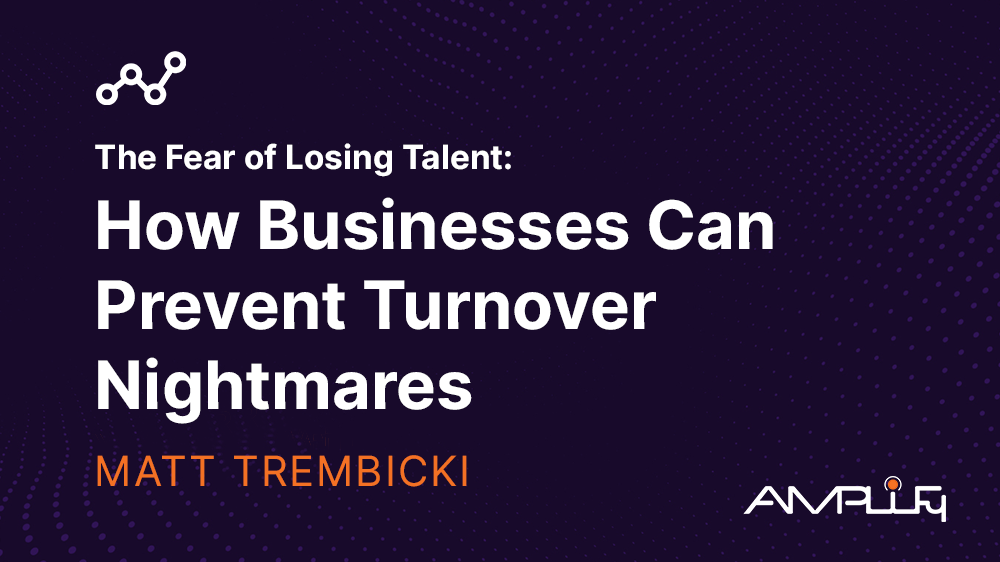The Fear of Losing Talent: How Businesses Can Prevent Turnover Nightmares
After spending nearly a decade in recruiting and search, I’ve seen up close just how disruptive talent loss can be.
In one instance, we placed an absolute rockstar in a key role—a true "needle in a haystack" kind of hire. This person hit the ground running, delivering real results and firing on all cylinders right from the start.
On paper, the role seemed like a perfect fit for their career growth. But within a year, they were gone, feeling stifled and underutilized.
For that company, it wasn’t just a blow to productivity but to morale and momentum. After all, they’d searched for months for the “right fit,” only to find themselves back at square one.
That experience is one of many that reveal why the fear of losing top talent haunts so many leaders.
The hidden costs—lost productivity, constant recruiting, re-training—all add up, and if left unchecked, it’s easy to end up with a revolving door that’s tough to close.
Here’s the truth: Managing talent is a lot like managing a complex project—it takes thoughtful planning, consistent check-ins, and a long-term view.
Here are five common pitfalls that turn talent management into a nightmare, and how to avoid them:
1. Neglecting Employee Development: Failing to Nurture Long-Term Loyalty
Many companies put all their focus on the initial hire and forget about growth paths once they’re on board. But without clear advancement opportunities, even the most driven employees will start looking elsewhere.
Tip: Show employees there’s a future with your company. Development plans, mentorship, and upskilling aren’t just perks; they’re retention essentials. Let your team know their growth is a priority.
2. Overworking Your Team: Pushing Talent Beyond Their Limits
Burnout is real. Just as athletes need rest to perform at their peak, so do employees. I can’t count the number of candidates who’ve come to me looking for new roles simply because their work-life balance was sacrificed.
Tip: Encourage balance. Give employees the freedom to recharge and consider flexible arrangements. A healthy work-life balance isn’t just good for employees—it’s good for business.
3. Ignoring Feedback: Missing Early Warning Signs
Not listening to feedback is like ignoring a warning light on your dashboard—sooner or later, things will break down. Often, simple issues go unresolved, and employees see the exit as the only fix.
Tip: Make feedback routine. Use surveys, 1:1s, and team meetings to catch concerns early. Listening (and acting) on feedback shows your team that their voice matters.
4. Failing to Recognize Efforts: Letting Talent Feel Undervalued
Recognition goes far beyond compensation. Employees want to feel that their hard work and impact are seen and valued.
Tip: Bake appreciation into your culture. Create programs to celebrate wins, big or small, and make recognition part of your team’s day-to-day experience. A simple “thank you” or a shoutout can go a long way.
5. Lack of Strategic Workforce Planning: Not Preparing for Turnover Risks
Too many companies are caught off guard by turnover, scrambling to fill gaps once they’re there. Without a strategic workforce plan, turnover can lead to productivity dips and chaotic transitions.
Tip: Build a workforce strategy that accounts for succession, cross-training, and talent mobility. Planning ahead ensures that your business stays steady, even during inevitable transitions.
Turnover doesn’t have to be a horror story. By focusing on development, fostering balance, listening to your team, recognizing efforts, and planning strategically, you can create a place where people actually want to stay.
In the end, retaining talent is about investing in your people. It’s about keeping the right people on board — those who grow with you and help fuel your company’s long-term success.




